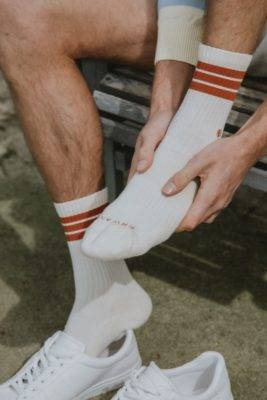When Is It OK to Run Through Pain?
All runners experience injury from time to time, but knowing when it’s OK to continue running despite pain and when to stop can be tricky.
Runners should take their injuries seriously and seek advice from a qualified healthcare professional as soon as possible. Resting is also key in order to reduce the risk of re-injury.
It’s OK to run through pain
No matter your level of fitness, running can cause some aches and pains from time to time. While these are natural reactions to exercise or training, it’s essential that you recognize when it’s okay to push through discomfort and when to cut your run short or take a break altogether.
When is it okay to run through pain? Finding an answer that works for everyone can be challenging as everyone’s experience of discomfort differs. But if the discomfort becomes unbearable, stop running immediately and seek medical help from a qualified professional.
Some aches and pains are harmless and can be ignored; however, others are warning signs that you’re overtraining or injuring yourself. No matter the type of discomfort, it is essential to listen to your body and avoid overtraining by increasing mileage gradually while taking rest days in between. These strategies will help get through runs without injury, allowing you to continue running long term! Additionally, understanding common running injuries and their warning signs is key in order to keep your body healthy and strong.
It’s not OK to run through pain
No matter your level of experience as a runner or just starting out, you will likely experience pain at some point. This could range from an annoying ache to an overuse injury. Everyone reacts differently to pain, but there are some general guidelines that can help you determine when it’s time for rest and recovery.
Generally, only run through pain when it becomes intolerable. This could indicate that you’ve been training too hard or your muscles are overstrained.
How best to decide this? Consider what you want to achieve and the pain you are feeling. It might just take adjusting your pace or taking a moment to appreciate what’s around you.
If your pain is severe or persistent, it’s wise to rest and seek medical advice from a healthcare provider who specializes in sports rehab. Remember that while it’s okay to feel in pain, ignoring it could lead to further injury–including overtraining, compensation issues, and an even more serious injury than what was originally feared.
You can’t run through pain
Pain is a complex experience involving both physical and psychological sensations in response to an unpleasant stimulus. The brain uses neurons (nerve cells) as messengers, sending pain signals throughout different regions of the brain via special chemicals called neurotransmitters. Once these chemicals reach their intended destination, they activate receptors on cell surfaces which then pass along the signal along to the next station along the pathway.
Running through pain is never recommended as it can lead to overuse injuries. To reduce the risk of these, reduce your mileage and give your muscles time for recovery between runs. Additionally, incorporate active recovery exercises like cross-training into your weekly running regiment. If the discomfort persists, seek medical assistance from a healthcare provider who can accurately diagnose the source of your discomfort and get you back up and running as soon as possible. For those dealing with back pain and sciatica, seeking professional help is crucial.
If you have any questions or concerns, don’t hesitate to contact us for more information on how we can help you with your running and pain management needs.



